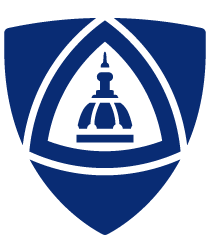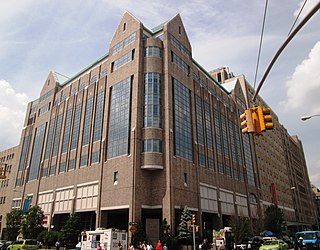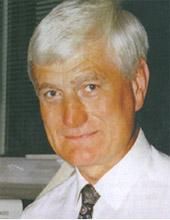Related Research Articles

Pediatrics is the branch of medicine that involves the medical care of infants, children, adolescents, and young adults. In the United Kingdom, paediatrics covers many of their youth until the age of 18. The American Academy of Pediatrics recommends people seek pediatric care through the age of 21, but some pediatric subspecialists continue to care for adults up to 25. Worldwide age limits of pediatrics have been trending upward year after year. A medical doctor who specializes in this area is known as a pediatrician, or paediatrician. The word pediatrics and its cognates mean "healer of children," derived from the two Greek words: παῖς and ἰατρός. Pediatricians work in clinics, research centers, universities, general hospitals and children's hospitals, including those who practice pediatric subspecialties.

Sudden infant death syndrome (SIDS) is the sudden unexplained death of a child of less than one year of age. Diagnosis requires that the death remain unexplained even after a thorough autopsy and detailed death scene investigation. SIDS usually occurs during sleep. Typically death occurs between the hours of midnight and 9:00 a.m. There is usually no noise or evidence of struggle. SIDS remains the leading cause of infant mortality in Western countries, constituting half of all post-neonatal deaths.

Shaken baby syndrome (SBS), also known as abusive head trauma (AHT), is the leading cause of fatal head injuries in children younger than two years old. Diagnosing the syndrome has proven to be both challenging and contentious for medical professionals, in that objective witnesses to the initial trauma are generally unavailable. This is said to be particularly problematic when the trauma is deemed 'non-accidental'. Some medical professionals propose that SBS is the result of respiratory abnormalities leading to hypoxia and swelling of the brain. The courtroom has become a forum for conflicting theories with which generally accepted medical literature has not been reconciled. Often there are no outwardly visible signs of trauma, despite the presence of severe internal brain and eye injury. Complications include seizures, visual impairment, cerebral palsy, cognitive impairment, and death.
Hypotonia is a state of low muscle tone, often involving reduced muscle strength. Hypotonia is not a specific medical disorder, but a potential manifestation of many different diseases and disorders that affect motor nerve control by the brain or muscle strength. Hypotonia is a lack of resistance to passive movement, whereas muscle weakness results in impaired active movement. Central hypotonia originates from the central nervous system, while peripheral hypotonia is related to problems within the spinal cord, peripheral nerves and/or skeletal muscles. Severe hypotonia in infancy is commonly known as floppy baby syndrome. Recognizing hypotonia, even in early infancy, is usually relatively straightforward, but diagnosing the underlying cause can be difficult and often unsuccessful. The long-term effects of hypotonia on a child's development and later life depend primarily on the severity of the muscle weakness and the nature of the cause. Some disorders have a specific treatment but the principal treatment for most hypotonia of idiopathic or neurologic cause is physical therapy and/or occupational therapy for remediation.

Sidney Farber was an American pediatric pathologist. He is regarded as the father of modern chemotherapy for his work using folic acid antagonists to combat leukemia, which led to the development of other chemotherapeutic agents against other malignancies. Farber was also active in cancer research advocacy and fundraising, most notably through his establishment of the Jimmy Fund, a foundation dedicated to pediatric research in childhood cancers. The Dana–Farber Cancer Institute is named after him.

The Johns Hopkins University School of Medicine (JHUSOM) is the medical school of Johns Hopkins University, a private research university in Baltimore, Maryland, United States. Founded in 1893, the School of Medicine shares a campus with the Johns Hopkins Hospital and Johns Hopkins Children's Center, established in 1889. It has consistently ranked among the top medical schools in the United States in terms of the number/amount of research grants/funding awarded by the National Institutes of Health, among other measures.

Micrognathism is a condition where the jaw is undersized. It is also sometimes called mandibular hypoplasia. It is common in infants, but is usually self-corrected during growth, due to the jaws' increasing in size. It may be a cause of abnormal tooth alignment and in severe cases can hamper feeding. It can also, both in adults and children, make intubation difficult, either during anesthesia or in emergency situations.

Speech-language pathology is a healthcare field of expertise practiced globally. Speech-language pathology (SLP) specializes in the evaluation, diagnosis, treatment, and prevention of communication disorders, cognitive-communication disorders, voice disorders, and swallowing disorder across the lifespan. It is an independent profession that is sometimes considered a "related health profession" or allied health profession by professional bodies like the American Speech-Language-Hearing Association (ASHA) and Speech Pathology Australia. Allied health professions include audiology, optometry, occupational therapy, rehabilitation psychology, physical therapy and others.

Morgan Stanley Children's Hospital of NewYork-Presbyterian is a women's and children's hospital at 3959 Broadway, near West 165th Street, in the Washington Heights neighborhood of Manhattan, New York City. It is a part of NewYork-Presbyterian Hospital and the Columbia University Irving Medical Center. The hospital treats patients aged 0–21 from New York City and around the world. The hospital features a dedicated regional ACS designated pediatric Level 1 Trauma Center and is named after financial firm Morgan Stanley, which largely funded its construction through philanthropy.
Charles Randal Smith is a former Canadian pathologist known for performing flawed child autopsies that resulted in wrongful convictions.
Syed Amir Fazal Hoda is a professor of pathology at the Weill Medical College of Cornell University, and an Attending Pathologist at the New York Presbyterian Hospital. Hoda is a surgical pathologist with a particular interest in diagnostic breast pathology.
Mildred T. Stahlman is an American neonatologist and academic. She worked as a professor of pediatrics and pathology at Vanderbilt University in Nashville, Tennessee.
Martha Wollstein was an American physician. Wollstein was born in New York to a German Jewish family.

Lotte Strauss was a German-American pathologist.
Sudden unexplained death in childhood (SUDC) is the death of a child over the age of 12 months which remains unexplained after a thorough investigation and autopsy. There has not been enough research to identify risk factors, common characteristics, or prevention strategies for SUDC.

John M. Opitz is a German-American medical geneticist and professor at the University of Utah School of Medicine. He is best known for rediscovering the concept of the developmental field in humans and for his detection and delineation of many genetic syndromes, several now known as the "Opitz syndromes" including Smith–Lemli–Opitz syndrome (SLOS), Opitz–Kaveggia syndrome (FGS1), Opitz G/BBB syndrome, Bohring–Opitz syndrome, and other autosomal and X-linked conditions. He is founder of the Wisconsin Clinical Genetics Center, the American Journal of Medical Genetics, and was a cofounder of the American College and American Board of Medical Genetics.

John Lewis Emery was a British-born paediatric pathologist and emeritus professor at the University of Sheffield. Emery was most notable for being one of the founding fathers of paediatric pathology in the country, and for conducting research into haematology, developmental anatomy, congenital deformities, particularly hydrocephalus, and was probably Britain's leading scientist in the subject of unexplained infant deaths, or cot death.
John Bruce Beckwith is an American pediatric pathologist known for helping to identify Beckwith-Wiedemann syndrome, which is partly named after him. He is also known for his role as reference pathologist for the National Wilms Tumor Study Group, a position he held from 1969 until his retirement thirty years later. He is also recognized for his research on sudden infant death syndrome, which he helped to define in the 1960s.
Lucy Balian Rorke-Adams is an American pediatric neuropathologist who served as president of the American Association of Neuropathologists in 1982. She spent 50 years at the Children’s Hospital of Philadelphia. She was the first and only female president of Philadelphia General Hospital and president of the PGH medical staff (1973–1975). She also served as president of the medical staff at CHOP (1986-1988) and as acting chair of pathology at CHOP (1995-2001). She was a professor at the Perelman School of Medicine at the University of Pennsylvania beginning in 1970, becoming clinical professor of pathology as of 1979.

Henry Lewis Halliday was a British-Irish peaditrician and neonatologist. In 2021, Halliday was awarded the James Spence Medal for research into neonatology, for coordinating two of the largest neonatal multicentre trials for prevention and treatment of a number of neonatal respiratory illnesses and for a breakthrough in the development of a new lung surfactant that brought relief to very small babies suffering from infant respiratory distress syndrome (RDS).
References
- 1 2 3 4 5 "Professor Marta Cohen awarded OBE". Sheffield Children’s NHS Foundation Trust. 2020-12-18. Retrieved 2021-02-24.
- 1 2 "La médica graduada de la UNLP, Marta Cohen, fue nombrada "Miembro de la Orden del Imperio Británico"". unlp.edu.ar. Retrieved 2021-02-25.
- 1 2 3 "Quién es Marta Cohen, la médica argentina a la que la reina nombró "miembro de la Orden del Imperio"". www.telam.com.ar. Retrieved 2021-02-24.
- ↑ "Marta Cohen". The Pathologist. Retrieved 2021-01-27.
- ↑ "Should Waney Squier have been struck off over shaken baby syndrome?". BBC News. 2016-10-17. Retrieved 2021-02-25.
- ↑ Coghlan, Andy. "Doctor gagged for doubting shaken baby syndrome". New Scientist. Retrieved 2021-02-25.
- ↑ Cohen, Marta C.; Offiah, Amaka; Sprigg, Alan; Al-Adnani, Mudher (2013-07-01). "Vitamin D Deficiency and Sudden Unexpected Death in Infancy and Childhood: A Cohort Study". Pediatric and Developmental Pathology. 16 (4): 292–300. doi:10.2350/13-01-1293-OA.1. ISSN 1093-5266.